Patreon CHORDS 101 Series
Accompaniment Patterns
- Page Two -
Most pieces of music have a regular musical background which supports the melody. This background often repeats the notes of the chords in the chord sequence in regular rhythmic patterns.
The successful modern keyboard player needs to be able to devise left hand accompaniment patterns from chord symbols to provide this background in solo keyboard styles.
This is the second page of the Patreon Chords Accompaniment Patterns mini-series. Make sure you have mastered the material on Page One before carrying on.
|
Accomp. practice patterns |
The R, 5, 8, 10 accompaniment pattern
The most attractive four-note chord tone pattern takes the third (3) of the R, 3, 5, 8 pattern up an octave. To show that the third is in a new place, we call it ‘the tenth’ (10), carrying on counting up from the octave (8).
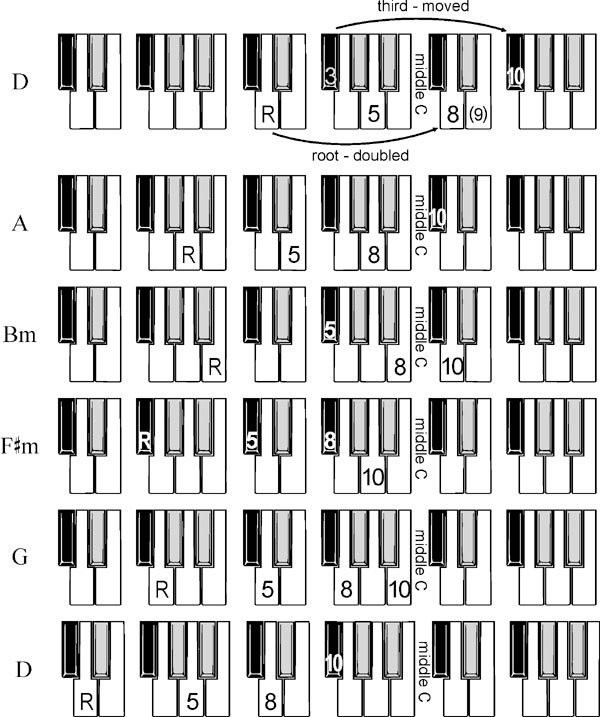
Note that:
- The tenth (10) is the third (3), but an octave higher. (We call it the tenth to remind ourselves it’s above the octave.)
- The octave (8) is the root (R), but an octave higher.
Practicing R, 5, 8, 10 accompaniment patterns
Find the root, fifth, octave and tenth, in that order, of all the five chords, playing the root (R) with the left hand, and the fifth (5), octave (8) and tenth (10) with the right hand.
Play through the Canon chord sequence.

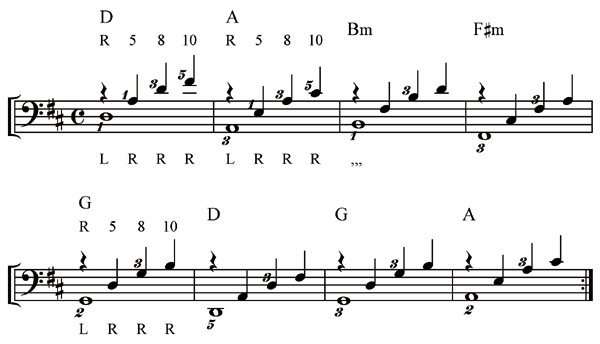
There is a lot of information in the illustration above. Reading from the top, you see the chord symbol (D, A, etc.), then the chord tone order R, 3, 5, 8. Then comes the actual music, with fingering, and lastly the reminder to play the notes one with the left hand and three with the right (L, R, R, R).
Finding all four notes quickly is your first priority, but you should also try to use sensible bass line (LH) fingering given. Here is a bass line diagram showing the fingering given in the music above.
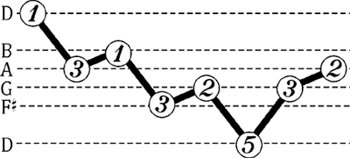
You can use your own preferred fingering if you wish, but always start on LH1 (thumb) on the top D and get down to LH5 for the bottom D and back up without running out of fingers.
Useful practice techniques
In the accompaniment pattern above, the right hand always uses fingers 1, 3, 5.
If you make the octave (8) your right hand ‘target note’ when you move to a new chord and always play it with your right hand third finger (RH3) over it, your right hand thumb (RH1) and little finger (RH5) will be in the right place for the other chord tones (fifth and tenth) almost automatically.
Here’s an exercise to rehearse finding the target note (the octave, 8).
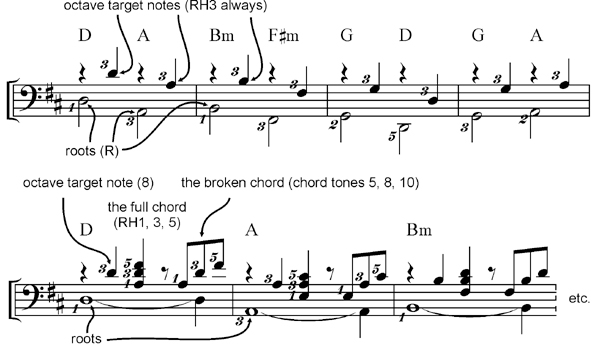
Another good way to get to know the root, fifth, octave and tenth accompaniment pattern notes thoroughly is to split them up between the hands in different ways.
Run through the chord sequence using these three different combinations.
- Type One: Play the root with the left hand and the other three notes with the right (L, R, R, R)
- Type Two: Play the root and the fifth with the left hand, and the octave and tenth with the right (L, L, R, R)
- Type Three: Play three notes with the left hand and just one with the right (L, L, L, R)
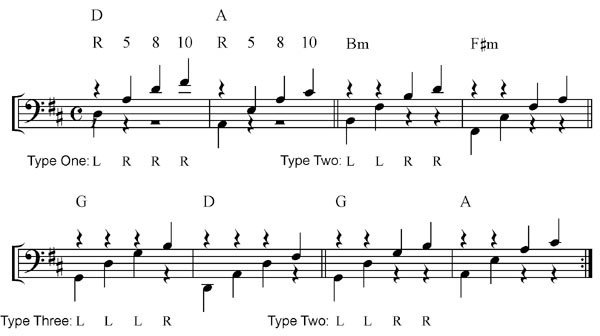
The practice patterns
The modern keyboard player needs to be able to build root, fifth, octave, tenth accompaniment patterns from chord symbols ‘on the fly’ and play them in the left hand almost automatically while the right hand plays the music the listener mostly listens to.
Playing these accompaniment patterns with the left hand alone is made possible by passing the left hand second finger over the thumb (on the ‘octave’) to play the fourth chord tone – the tenth (10).
Twelve left hand accompaniment practice patterns follow. In every case, your two fundamental tasks are:
- To find without hesitation the root, fifth, octave and tenth chord tones of the chord indicated by the chord symbol at the start of the pattern, and
- To develop a balanced hand position and the muscle memory needed to get to the notes.
Expect to find this practicing quite tiring. Rest your hand and arm periodically and shake out the tension before resuming.
The practice patterns are mostly in six-eight time. Six-eight meter (rhythm) is usually counted “One-and-a Two-and-a”, and having this count going on in your head will help you get better at ‘keeping the notes coming’.
The practice patterns are divided randomly among the five chords used in the Canon. You should transpose the patterns into all the other Canon chords using the R, 5, 8, 10 coding above the music manuscript.
You can, of course, play R, 5, 8, 10 accompaniment patterns on any chord and in any rhythm.


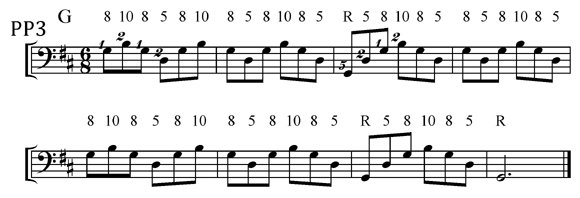
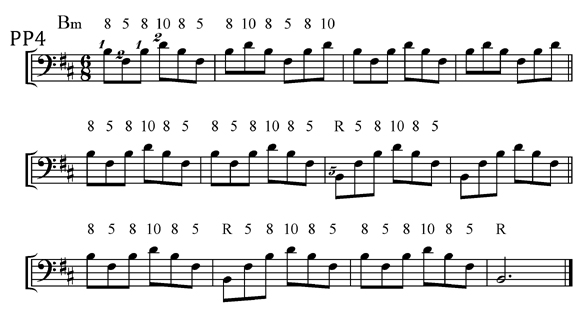

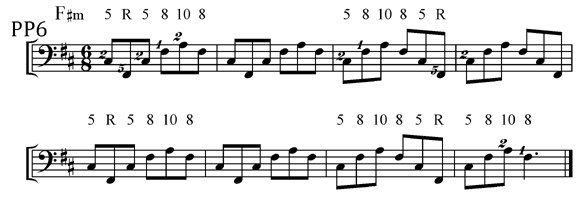
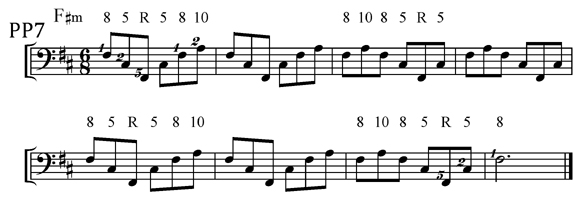
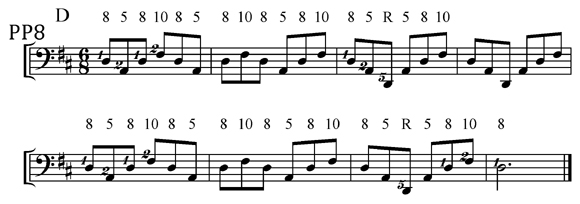
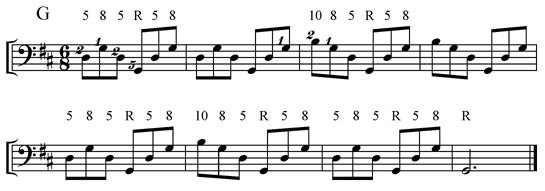
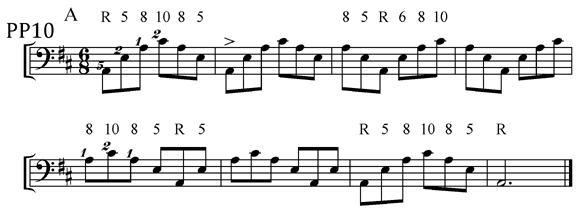
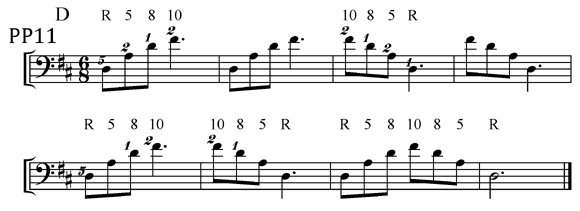
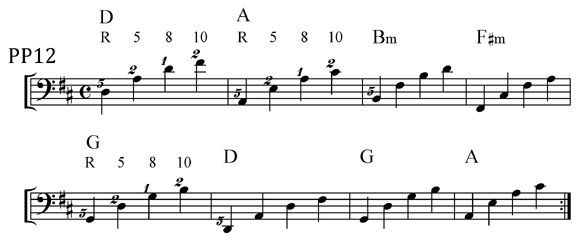
When you have a good grasp of this material, go on to Page Three of the series.
|
Accomp. practice patterns |
Hope you're enjoying studying with Musicarta! Come back soon!
|
OUT NOW! |
THE MUSICARTA BEAT & RHYTHM WORKBOOK At last! An effective approach to keyboard rhythm & syncopation skills. Learn more! |
ONLY $24.95! |
PATREON |
The MusicartaA methodical approach to keyboard syncopation for
|
PUBLICATIONS
exciting keyboard
creativity courses
CHORDS 101
WORKBOOK

~HANON~
video course

Musicarta
Patreon
PENTATONICS
WORKBOOK
video course

Creative Keyboard
video course

BEAT AND RHYTHM
WORKBOOK

- Volume 1 -

12-BAR PIANO
STYLES WORKBOOK

MUSICARTA MODES
WORKBOOK

PIANO STYLE

CANON PROJECT
video course

VARIATIONS
video course


- Piano Solo -
video course

- Piano Solo -


YouTube playlists





 THE LOGO
THE LOGO
